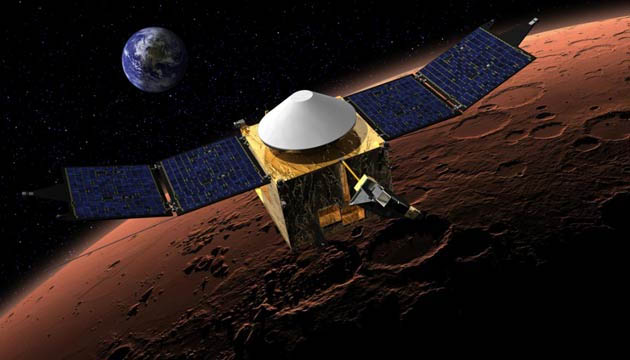
On September 21, NASA’s MAVEN (Mars Atmosphere and Volatile Evolution) spacecraft will go boldly where no one has gone before: to the very top of the Martian atmosphere!
One might ask, with all of the amazing imagery and mind-opening discoveries made by the fleets of orbiters, landers and rovers that have explored Mars’ surface, why is anyone interested in the rarified gases at the highest layers of Mars’ already rarified atmosphere? The answer, as it turns out, is a tale of two planets: Mars and Earth.
When we first started to explore Mars with robotic spacecraft in 1965 and compared it to our home planet, we were struck more by the differences between the two than the similarities. Our home world is wet, vibrant and greenly alive, while rusty-red Mars was found to be dry, desolate and lifeless — more like our Moon with a thin wisp of atmosphere.
Over a campaign of exploration spanning decades, we have gathered a great deal of observational data that has told a much more nuanced story of Mars: a wet, active and far more Earth-like Mars than imagined even in a lot of science fiction. The reason we failed to see the similarities at first is that it required looking across a gulf of time, and it takes time, and data, to reconstruct an accurate picture of the past.
Mars, we now know with fair certainty, once had a thicker, warmer atmosphere and a water cycle with precipitation, river systems, and wide shallow, likely salty seas. Whether life ever emerged on Mars is still a question, but the environment we are sensing a couple billion years in the past feels temperate and inviting.